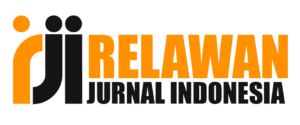Klasifikasi Omset ATK menggunakan Algoritma Naïve Bayes
Abstract
Small businesses play a role in absorbing work energy, as a source of innovation, providing economic services to the community and in the process of equalizing and increasing community profit. One of the factors that influences the dynamics of modern business is technological progress. Evolving technology has opened the door to rapid innovation. Profit classification is a popular and effective approach for businesses that can tailor marketing strategies to each group more effectively which will impact business profit. The stock condition of an item greatly influences sales revenue. The increasing demand for goods will result in large profit. Product availability to meet consumer needs is a problem that must be overcome. The stock condition of an item greatly influences sales profit. This research is related to the classification of profit for each item sold in a shop, whether it is sold a lot or not enough to maximize the stock of goods per time using the Naive Bayes algorithm. From data research, attribute grouping, preprocessing, data transformation and modeling were carried out using the Naïve Bayes algorithm in the Python programming language. Testing the Naïve Bayes algorithm obtained 90% accuracy results for the classification of stationery profit. The system can determine the classes of goods that are sold a lot and goods that are not sold enough, becoming a solution for shop leaders to more easily take business strategies quickly and optimally which of course will affect profit.
References
Balaji, V. R., Suganthi, S. T., Rajadevi, R., Krishna Kumar, V., Saravana Balaji, B., & Pandiyan, S. (2020). Skin disease detection and segmentation using dynamic graph cut algorithm and classification through Naive Bayes classifier. Measurement, 163, 107922. https://doi.org/10.1016/j.measurement.2020.107922
Das, B. K., & Dutta, H. S. (2020). GFNB: Gini index–based Fuzzy Naive Bayes and blast cell segmentation for leukemia detection using multi-cell blood smear images. Medical & Biological Engineering & Computing, 58(11), 2789–2803. https://doi.org/10.1007/s11517-020-02249-y
Harahap, F., Harahap, A. Y. N., Ekadiansyah, E., Sari, R. N., Adawiyah, R., & Harahap, C. B. (2018). Implementation of Naïve Bayes Classification Method for Predicting Purchase. 2018 6th International Conference on Cyber and IT Service Management (CITSM), 1–5. https://doi.org/10.1109/CITSM.2018.8674324
Kilari, H., Edara, S., Yarra, G. R. S., & Gadhiraju, D. V. (2022). Customer Segmentation using K-Means Clustering. International Journal of Engineering Research, 11(03).
Muchardie, B. G., Gunawan, A., & Aditya, B. (2019). E-Commerce Market Segmentation Based On The Antecedents Of Customer Satisfaction and Customer Retention. 2019 International Conference on Information Management and Technology (ICIMTech), 103–108. https://doi.org/10.1109/ICIMTech.2019.8843792
Nandapala, E. Y. L., & Jayasena, K. P. N. (2020). The practical approach in Customers segmentation by using the K-Means Algorithm. 2020 IEEE 15th International Conference on Industrial and Information Systems (ICIIS), 344–349. https://doi.org/10.1109/ICIIS51140.2020.9342639
Novitalia, N., Mawasgenti, P. D., Apriani, T., S., A. P., & Saifudin, A. (2021). Penggunaan Metode Naive Bayes Classifier untuk Mengevaluasi Kinerja Akademik Mahasiswa di Perguruan Tinggi. Jurnal Teknologi Sistem Informasi dan Aplikasi, 4(2), 65. https://doi.org/10.32493/jtsi.v4i2.7752
Peling, I. B. A., Arnawan, I. N., Arthawan, I. P. A., & Janardana, I. G. N. (2017). Implementation of Data Mining To Predict Period of Students Study Using Naive Bayes Algorithm. International Journal of Engineering and Emerging Technology, 2(1), 53. https://doi.org/10.24843/IJEET.2017.v02.i01.p11
Pramono, P. P., Surjandari, I., & Laoh, E. (2019). Estimating Customer Segmentation based on Customer Lifetime Value Using Two-Stage Clustering Method. 2019 16th International Conference on Service Systems and Service Management (ICSSSM), 1–5. https://doi.org/10.1109/ICSSSM.2019.8887704
Romadhon, M. R., & Kurniawan, F. (2021). A Comparison of Naive Bayes Methods, Logistic Regression and KNN for Predicting Healing of Covid-19 Patients in Indonesia. 2021 3rd East Indonesia Conference on Computer and Information Technology (EIConCIT), 41–44. https://doi.org/10.1109/EIConCIT50028.2021.9431845
Shihab, S. H., Afroge, S., & Mishu, S. Z. (2019). RFM Based Market Segmentation Approach Using Advanced K-means and Agglomerative Clustering: A Comparative Study. 2019 International Conference on Electrical, Computer and Communication Engineering (ECCE), 1–4. https://doi.org/10.1109/ECACE.2019.8679376
Sianipar, J. P., Saputra, R. E., & Setianingsih, C. (2021). Waves With Multi-Sensor System Based on Web Application Using Naive Bayes Algorithm.
Strutynska, I., Kozbur, G., Dmytrotsa, L., Sorokivska, O., & Melnyk, L. (2019). Influence of Digital Technology on Roadmap Development for Digital Business Transformation. 2019 9th International Conference on Advanced Computer Information Technologies (ACIT), 333–337. https://doi.org/10.1109/ACITT.2019.8780056
Sudrartono, T. (2019). Pengaruh Segmentasi Pasar Terhadap Tingkat Penjualan Produk Fashion Usaha Mikro Kecil.
Yaman, T. T., & Bilgic, E. (2019). Is Business Analytics Education Sufficient in Business Schools? The Case in Turkish Business Schools. 2019 3rd International Conference on Data Science and Business Analytics (ICDSBA), 152–156. https://doi.org/10.1109/ICDSBA48748.2019.00040
Yemelyanov, O., Petrushka, T., Lesyk, L., Symak, A., & Vovk, O. (2020). Modelling and Information Support for the Development of Government Programs to Increase the Accessibility of Small Business Lending. 2020 IEEE 15th International Conference on Computer Sciences and Information Technologies (CSIT), 229–232. https://doi.org/10.1109/CSIT49958.2020.9322040
Yoon, C. Y. (2020). Analyzing Enterprise Smart Business Capability in a Smart Technology Environment. 2020 3rd International Conference on Information and Computer Technologies (ICICT), 224–229. https://doi.org/10.1109/ICICT50521.2020.00097
Yoseph, F., Ahamed Hassain Malim, N. H., Heikkilä, M., Brezulianu, A., Geman, O., & Paskhal Rostam, N. A. (2020). The impact of big data market segmentation using data mining and clustering techniques. Journal of Intelligent & Fuzzy Systems, 38(5), 6159–6173. https://doi.org/10.3233/JIFS-179698
Zhang, J., & Liu, G. (2020). Prediction of Incompliance With Business Goals With Business-Related Data and Context Data. IEEE Access, 8, 187008–187020. https://doi.org/10.1109/ACCESS.2020.3030809









